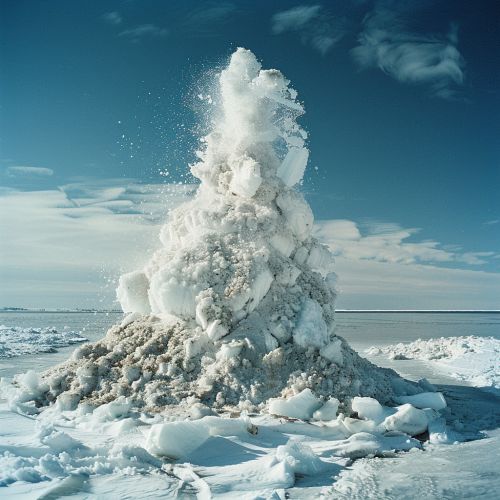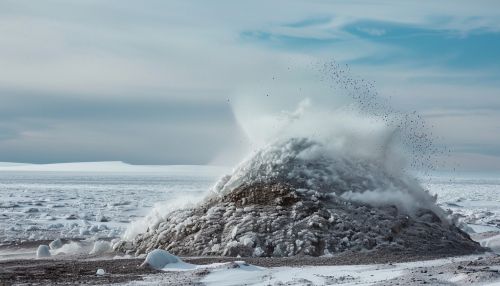Pingos
Introduction
Pingos, also known as hydrolaccoliths, are intriguing geological formations found primarily in the Arctic and subarctic regions. They are essentially frost-heaved hills with a core of ice. The term "pingo" originates from the Inuit word for a small hill. The study of pingos falls under the broader field of periglacial geomorphology, which involves the investigation of cold-weather processes, landforms, and landscapes.
Formation
Pingos form in an environment with a continuous permafrost layer. The process begins when a body of water, such as a lake or pond, freezes over. The ice acts as an insulating layer, preventing the heat from the water below from escaping. This heat causes the surrounding permafrost to thaw, creating a lens-shaped body of unfrozen water, or talik, beneath the ice. Over time, the pressure from the expanding ice and water pushes up the overlying soil, forming a mound.


The growth of a pingo is a slow process, often taking hundreds or even thousands of years. The size of a pingo at maturity can vary greatly, with heights ranging from a few meters to over 50 meters, and diameters from a few tens of meters to several hundred meters.
Types of Pingos
There are two main types of pingos: closed-system pingos and open-system pingos.
Closed-System Pingos
Closed-system pingos, also known as hydrostatic pingos, form in areas with a thick, continuous layer of permafrost. They are typically found in flat areas, such as tundra plains or river valleys. These pingos form when a body of water, such as a lake or pond, freezes and the underlying permafrost thaws, creating a talik. As the talik freezes and expands, it pushes up the overlying soil, forming a mound.
Open-System Pingos
Open-system pingos, also known as hydraulic pingos, form in areas where groundwater is under pressure and is forced upwards into the permafrost. This type of pingo is typically found in areas with steep slopes, such as riverbanks or hillsides. The water freezes and expands, pushing up the overlying soil and forming a mound.
Distribution
Pingos are found primarily in the Arctic and subarctic regions, where the climate is cold enough to support permafrost. The highest concentration of pingos is found in the Mackenzie Delta in the Northwest Territories of Canada, where over a thousand have been identified. Other notable locations include the Tuktoyaktuk Peninsula in Canada, the North Slope of Alaska, and the Siberian tundra in Russia.
Significance
Pingos are of significant interest to scientists for several reasons. They are indicators of past and present permafrost conditions, providing valuable information about the climate and environmental history of an area. They also serve as natural reservoirs of freshwater, which can be a critical resource in the arid Arctic environment. Furthermore, the collapse of pingos can lead to the formation of thermokarst lakes and ponds, which play a role in the carbon cycle and can contribute to global warming.
